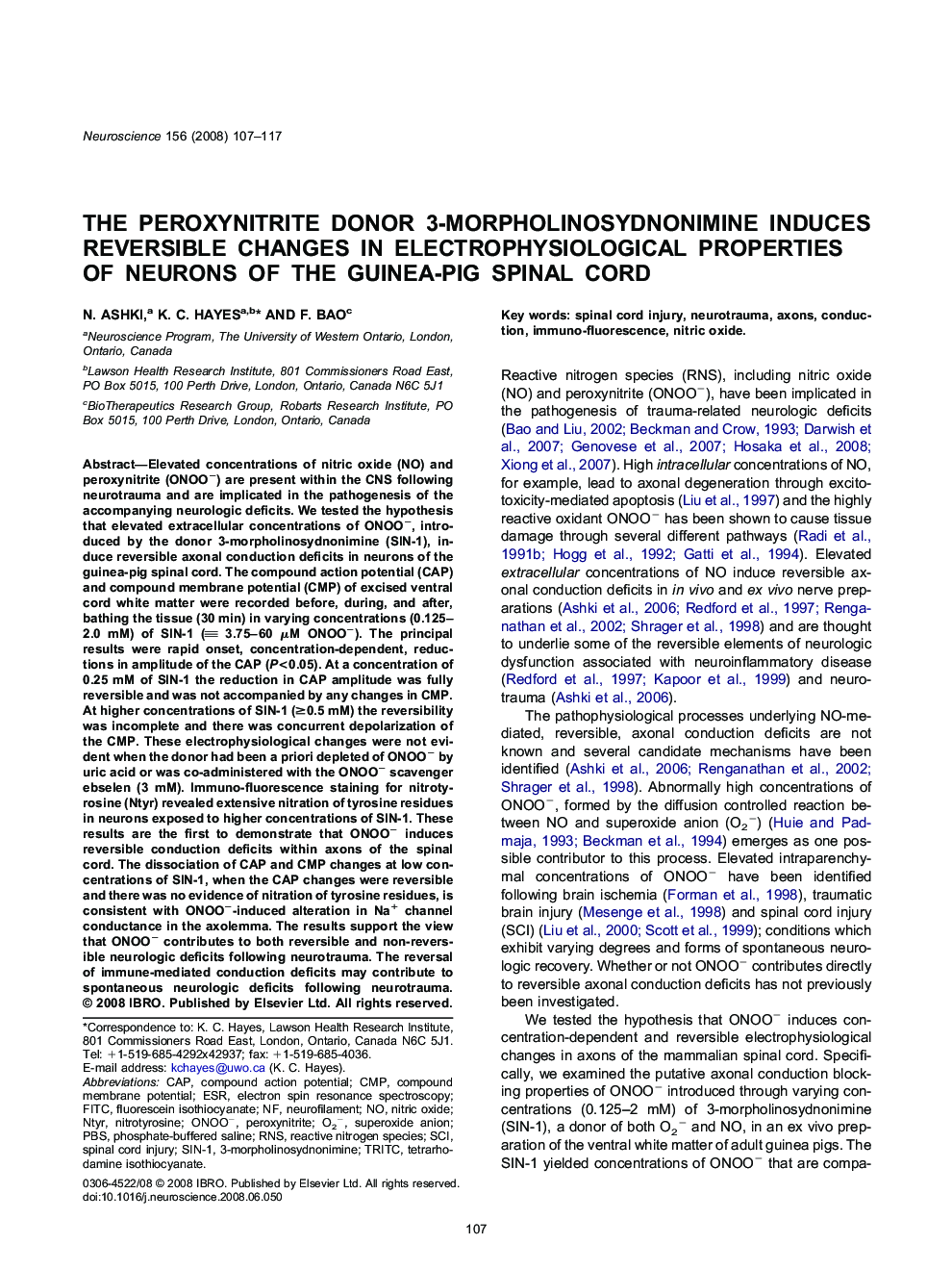| Article ID | Journal | Published Year | Pages | File Type |
|---|---|---|---|---|
| 6278037 | Neuroscience | 2008 | 11 Pages |
Elevated concentrations of nitric oxide (NO) and peroxynitrite (ONOOâ) are present within the CNS following neurotrauma and are implicated in the pathogenesis of the accompanying neurologic deficits. We tested the hypothesis that elevated extracellular concentrations of ONOOâ, introduced by the donor 3-morpholinosydnonimine (SIN-1), induce reversible axonal conduction deficits in neurons of the guinea-pig spinal cord. The compound action potential (CAP) and compound membrane potential (CMP) of excised ventral cord white matter were recorded before, during, and after, bathing the tissue (30 min) in varying concentrations (0.125-2.0 mM) of SIN-1 ( 3.75-60 μM ONOOâ). The principal results were rapid onset, concentration-dependent, reductions in amplitude of the CAP (P<0.05). At a concentration of 0.25 mM of SIN-1 the reduction in CAP amplitude was fully reversible and was not accompanied by any changes in CMP. At higher concentrations of SIN-1 (â¥0.5 mM) the reversibility was incomplete and there was concurrent depolarization of the CMP. These electrophysiological changes were not evident when the donor had been a priori depleted of ONOOâ by uric acid or was co-administered with the ONOOâ scavenger ebselen (3 mM). Immuno-fluorescence staining for nitrotyrosine (Ntyr) revealed extensive nitration of tyrosine residues in neurons exposed to higher concentrations of SIN-1. These results are the first to demonstrate that ONOOâ induces reversible conduction deficits within axons of the spinal cord. The dissociation of CAP and CMP changes at low concentrations of SIN-1, when the CAP changes were reversible and there was no evidence of nitration of tyrosine residues, is consistent with ONOOâ-induced alteration in Na+ channel conductance in the axolemma. The results support the view that ONOOâ contributes to both reversible and non-reversible neurologic deficits following neurotrauma. The reversal of immune-mediated conduction deficits may contribute to spontaneous neurologic deficits following neurotrauma.
